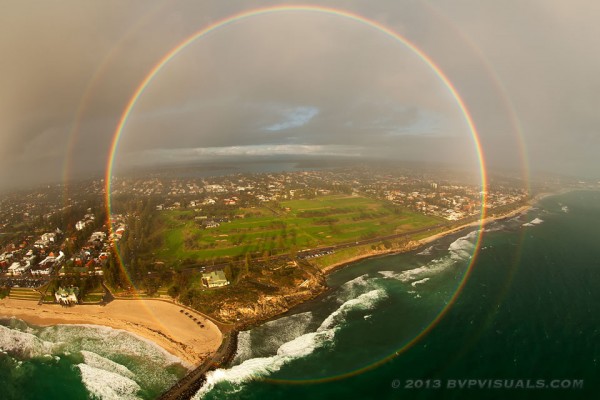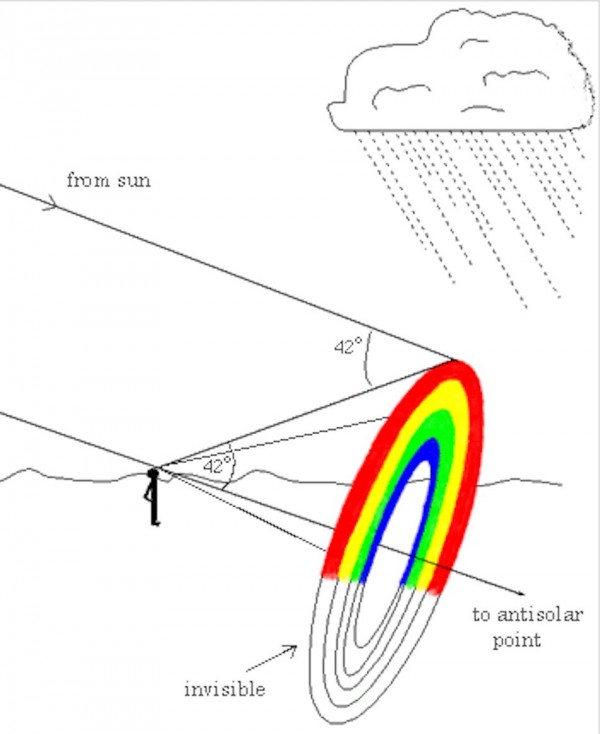Something you may not have thought about recently — why are rainbows curved? I’ve never considered this until I saw an explanation on the EarthSky website (http://earthsky.org/earth/what-gives-rainbows-their-curved-shape?).
This explanation does get a bit into physics. First, some basics — recall you can see rainbows when the sun is behind you and rain falls in front of you. Also, rainbows are actually three-dimensional, like a mosaic because sunlight is shining through many raindrops, and only looks flat in the same way the moon looks flat. Finally, rainbows are really entire circles (as in the photo, taken over Cottesloe Beach near Perth, Australia, in 2013 by Colin Leonhardt of Birdseye View Photography); you only see a segment because the horizon blocks the rest of the circle.
way the moon looks flat. Finally, rainbows are really entire circles (as in the photo, taken over Cottesloe Beach near Perth, Australia, in 2013 by Colin Leonhardt of Birdseye View Photography); you only see a segment because the horizon blocks the rest of the circle.
Now the hard part. When sunlight shines into a raindrop, the rays split into their component colors through refraction, But some of the light is also reflected back to you at an angle of between 40 and 42 degrees. Note this diagram from Physicsclassroom.com —
So you have to think in three dime nsions. And notice the observer in the diagram. The geometry of reflection results in a cone, with the observer’s eyes at the tip. Of course, light can bounce any way it wants. But the observer will only see what lies at the base of that cone at just the right angle.
nsions. And notice the observer in the diagram. The geometry of reflection results in a cone, with the observer’s eyes at the tip. Of course, light can bounce any way it wants. But the observer will only see what lies at the base of that cone at just the right angle.
If I’ve lost you, well, my academic strength was in history. The links will provide a more detailed explanation. But one more thought — rainbows really don’t exist! As Les Cowley of the website Atmospheric Optics describes it, “They are nowhere in space. You cannot touch them or drive around them. They are a collection of rays from glinting raindrops that happen to reach our eyes.”
But they’re still pretty to look at!
